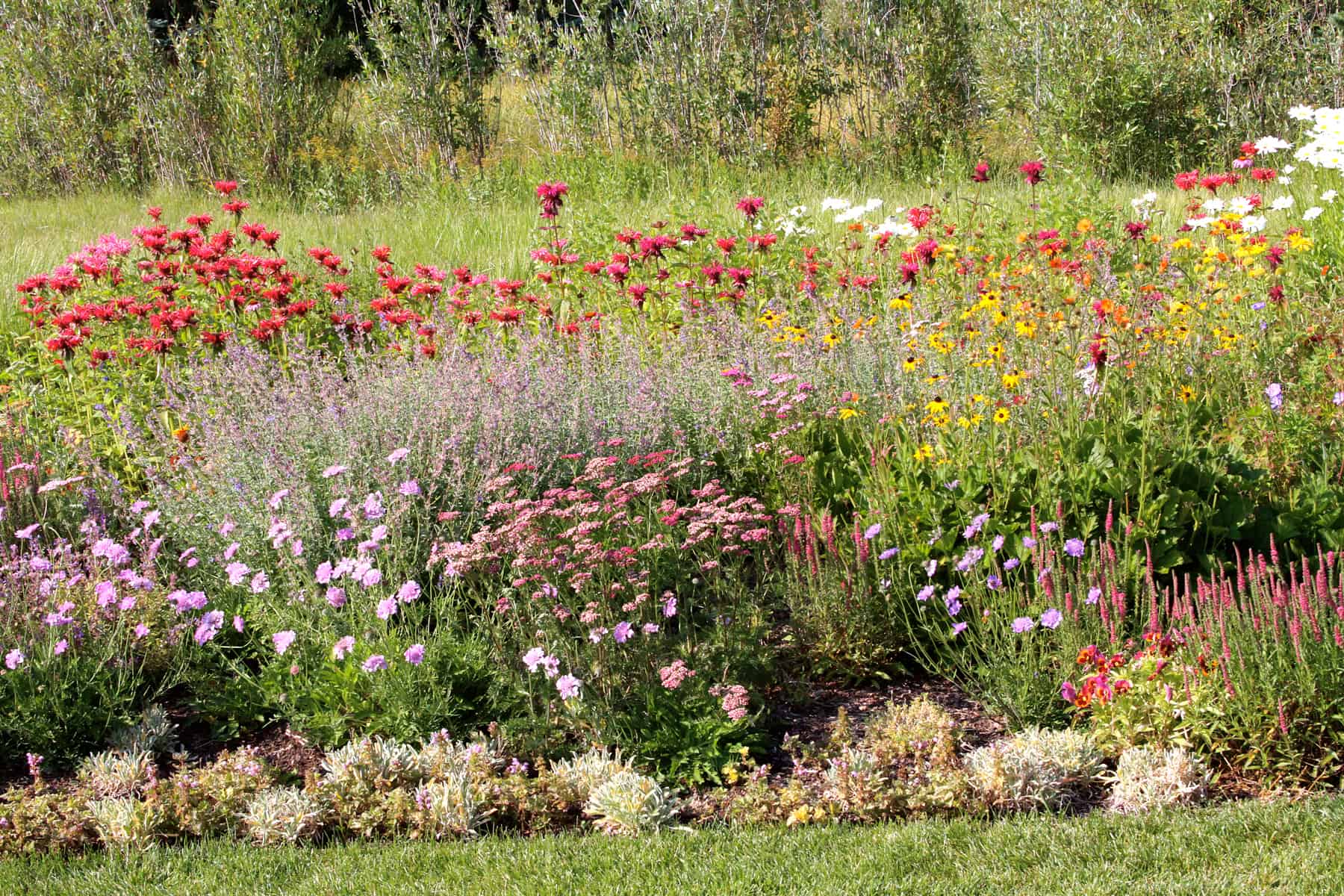By Jenn Rein // Photos provided by MD Nursery
—
Mending the soil that encases our beautiful planet is a modern trend. Activities like heavy tilling and chemical spraying zap the earth of valuable microorganisms and transform fertile soil into unproductive dirt. The principles of regenerative agriculture are driving a movement to repair such barren soil.
If you’re curious about what can be done in your own backyard, revamping the way you look at your landscaping should take center stage. By using regenerative methods, a property owner can aid in the health of the surrounding ecosystem and transform what may have been previously over-farmed land or a hazardous dumping ground, no farming experience required.
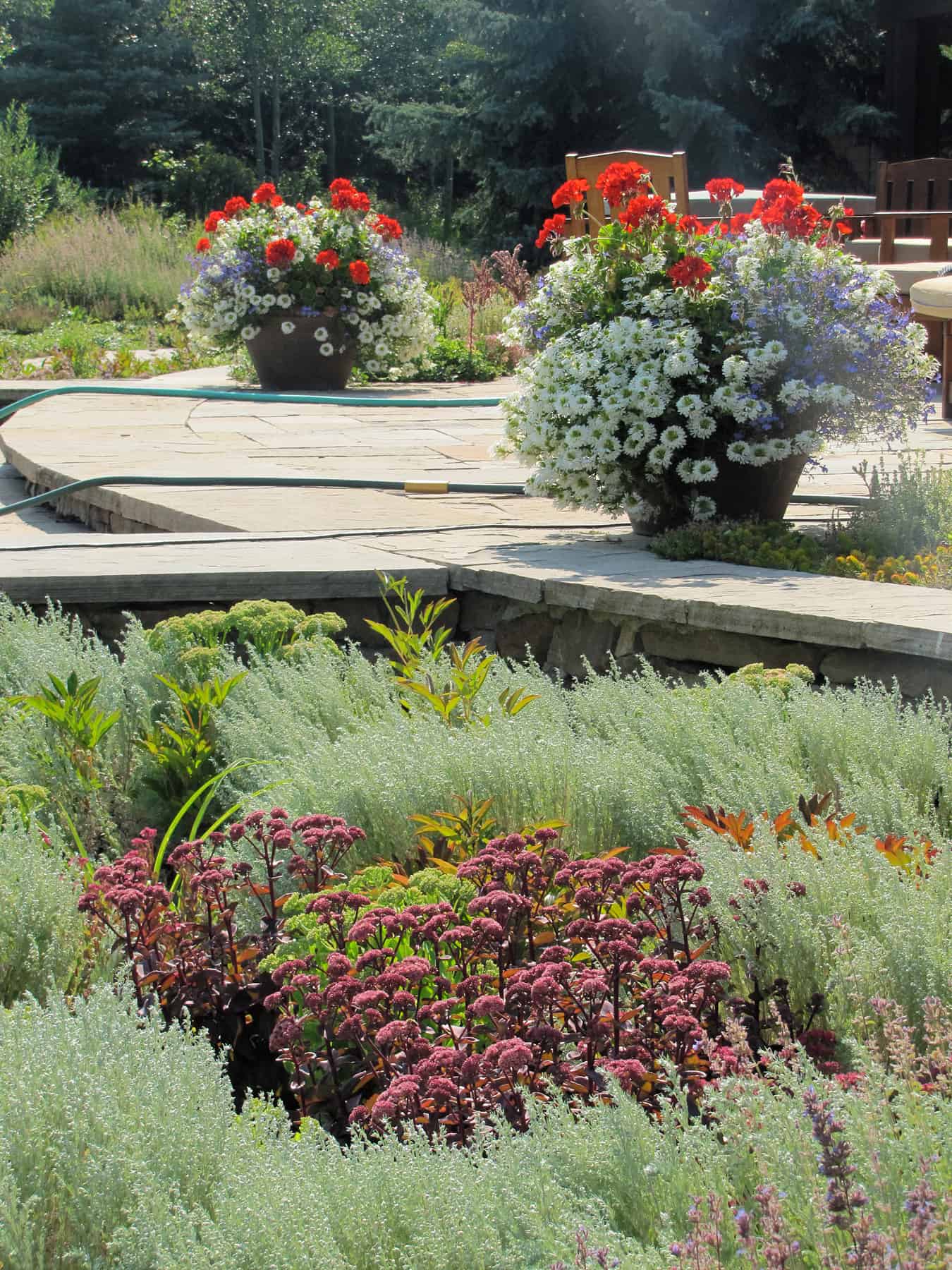
The Root of the Solution
Teton Valley residents Tim and Julie Morley have owned their share of degraded properties, creating a mindset to nurture the land on which they live. Four years ago, they purchased ten acres in Tetonia, Idaho, a parcel previously used to graze cattle and stripped of soil nutrients. Julie remembers the sheer amount of unproductive dirt before her, describing the landscape as, “a few sparse grasses, with thistles and dandelions, but no shrubs or trees.”
Their soil revitalization plan was augmented by a workshop hosted at the Teton Valley NOLS (National Outdoor Leadership) branch. The guest speaker, Ray Archuleta, a conservation agronomist with the Natural Resources Conservation Service, educated the group on soil health and the principles of agroecology. Using philosophies found in the of management of sustainable agriculture systems, Archuleta offered the Morleys advice on the specific needs of their property.
“Whatever notion you may have,” says Julie, “just know that it’s okay to have weeds. You need biodiversity to initiate the shift to healthier soil.”
A cultivated seed mix made especially for their location contained not just ground cover, but weeds, as well. Referred to as “pioneering plants,” the weeds serve to offer structure to the spent soil.
“We need to take a hard look at what we think is beautiful,” says Tim. “Connecting to the property that surrounds you doesn’t mean grooming it within a certain perception. It means understanding what the land needs to thrive.”
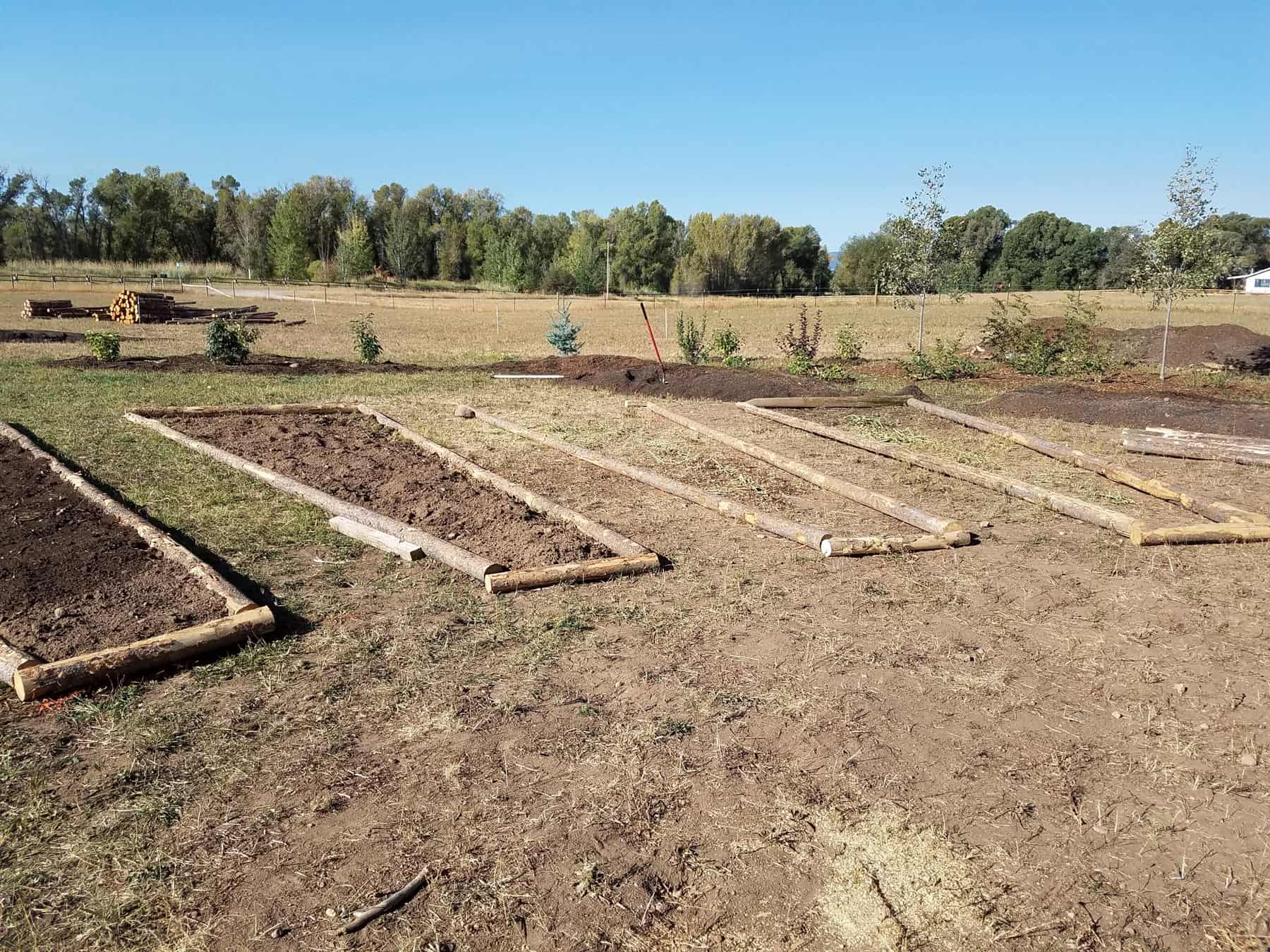
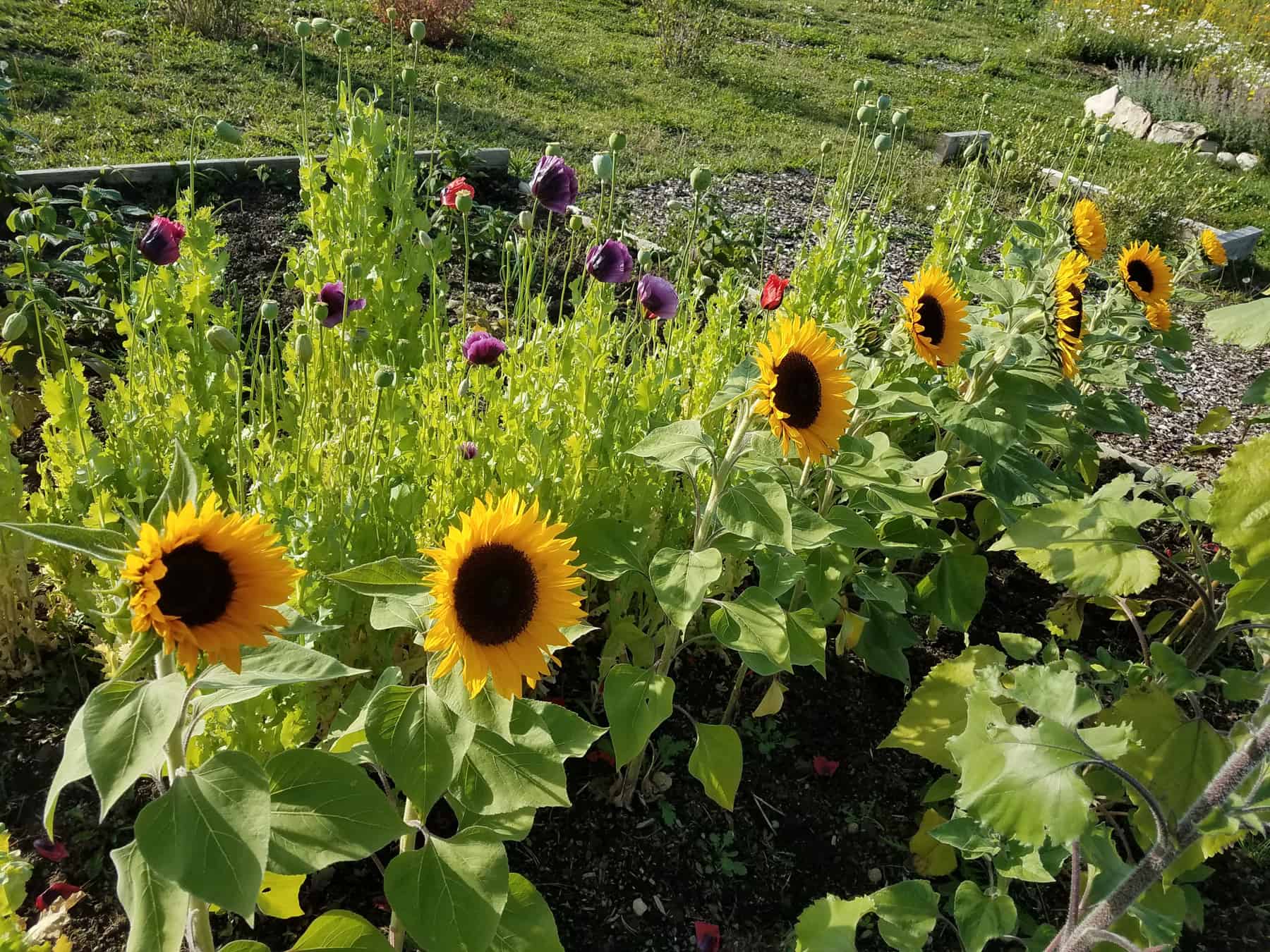
using principles found in the management of sustainable agricultural systems (right photo).
A Community Proposition
Robb Sgroi, of the Teton Conservation District, frequently addresses soil erosion control in his job as a land resources specialist. He reminds us that residential properties in the region may suffer from the depletion of healthy soil simply due to a new build, which is happening all around us. Sgroi encourages homeowners to consider limiting their landscaped footprint in favor of allowing undisturbed vegetation to perpetuate.
“Many of our residential landscapes have experienced disturbance and are populated with non-native plants,” he advises. “The topsoil may have been removed in leveling a home site, and the landscaping may consist of species that were not originally part of a web of flora and fauna that previously interacted on the site.”
“[Additionally,] a property may not have optimal characteristics, such as the ability to hold water and nutrients,” he explains. “Allowing for plant root growth aids [the soil] in holding carbon from the atmosphere.”
Fostering ground cover allows plants to pull carbon dioxide from the atmosphere, transforming root exudates (a mass of cells) in the ground. Sgroi recommends planting native species and crops like common vetch, crimson clover, sunflowers, and golden flax, to help recondition the soil in areas that were previously disturbed. Planting a few of the noted species results in microbial diversity, one of the vital components to soil regeneration.
Friends of the Teton River (FTR) works closely with farmers and ranchers in Teton Valley, Idaho, to implement regenerative land practices through the large-scale Teton Valley Soil Health Initiative. FTR’s Executive Director Amy Verbeten reports, “I’m excited that our valley’s agricultural producers have taken the bull by the horns, and we are seeing an ever-expanding adoption of these techniques.”
She says that each acre managed using regenerative practices—whether its purpose is for agriculture or backyard landscaping—is “an effort in improving overall soil health, water quality, and ecosystem function.”
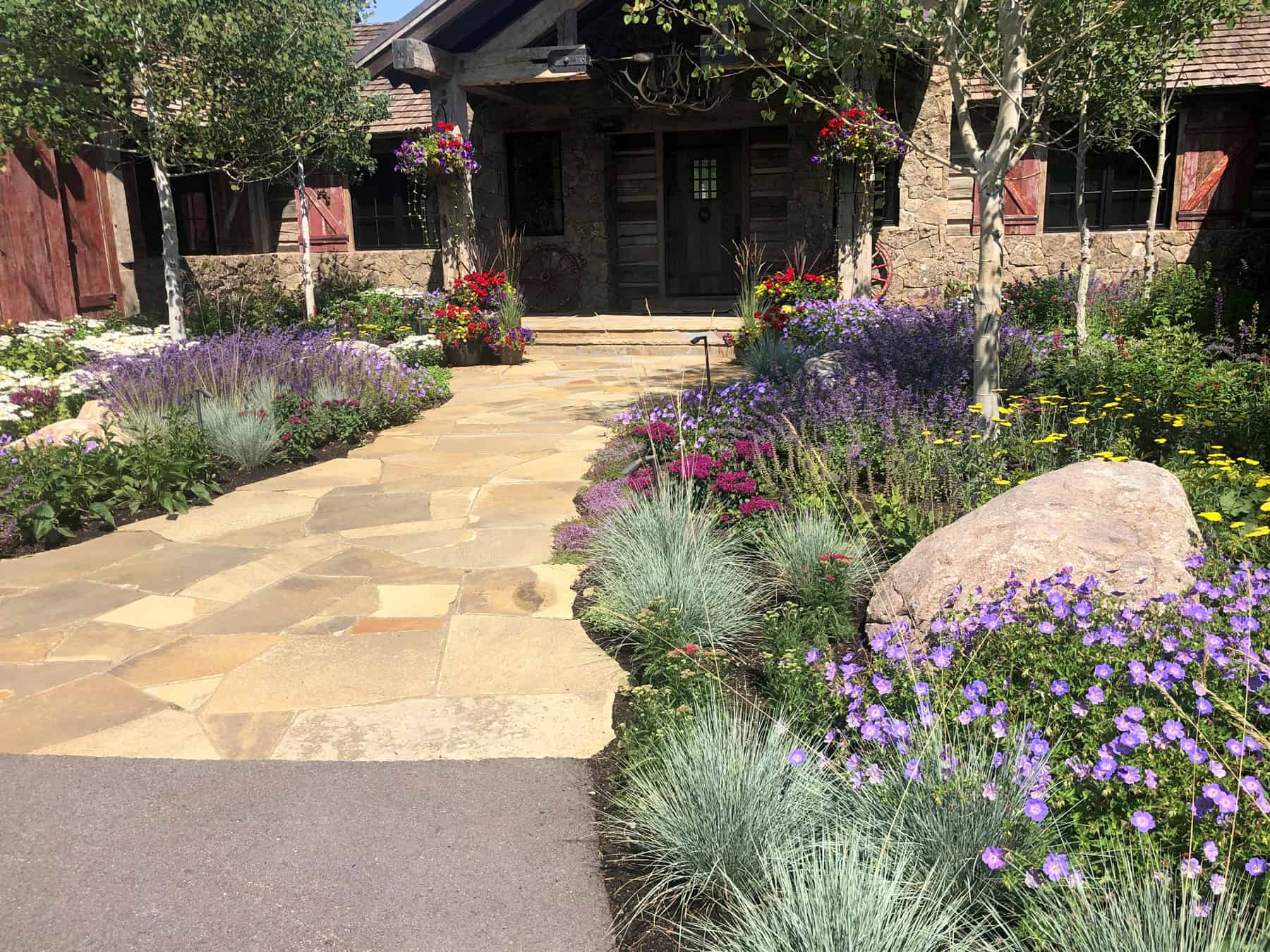
Sowing the Benefits
The team at Intermountain Aquatics specializes in habitat restoration and can help you understand the landscaping potential on your property. Co-founder and fisheries scientist Katie Salsbury breaks down the benefits to a holistic approach.
“Healthy native plants naturally store carbon in their root systems, are drought tolerant, and provide pollinator, bird, and wildlife habitat,” she says.
Salsbury mentions weed mitigation as an option in regenerative landscaping, but only if done thoughtfully.
“To get started, identify the noxious weeds on your property,” she says. “Then, hand pull them, seed native grasses in their place, and repeat annually for three to five years until the native plants have displaced the weeds.”
MD Nursery in Driggs is seeing increased interest in regenerative landscaping practices, as well. Retail Manager Carrie Baysek echoes the principle of the time investment needed in order to witness results.
“Start small and be patient,” she encourages. “You don’t have to redo your whole landscaping. There are little changes you can implement each year that can make a difference. Try top dressing with compost instead of traditional fertilizer in your gardens, plant a few pollinator plants each summer, or add mycorrhizae to [recolonize] new plantings.”
MD makes it easy by offering cover crop seeds, certified organic compost, organic fertilizers that are phosphorus-free, and straw guard rolls and landscape fabric that help to retain moisture and prevent erosion.
Embracing the methods of regenerative landscaping is an integral piece of our conservation puzzle. Employing less tilling, implementing cover crops, and even utilizing plats that may have an unsightly reputation are all steps toward soil renewal. A revolution in agriculture is literally underfoot, propelled by a critical understanding that the health of our planet’s surface affects the health of its inhabitants.
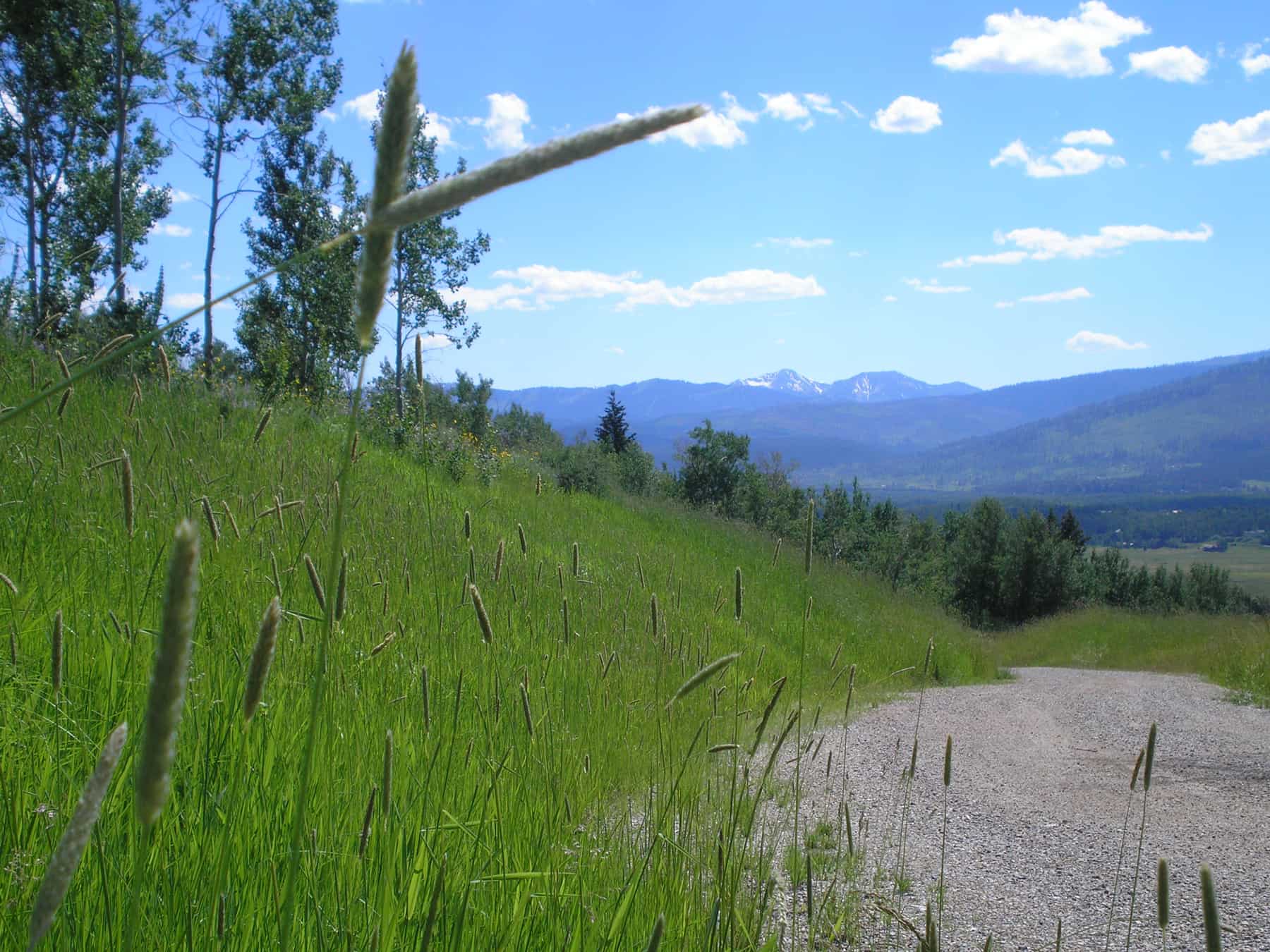
Resources
—
- Mountain Roots Education will host a “Rewilding Your Yard: Small Scale Land Regeneration” workshop on July 23 conducted by Tim and Julie Morley of Meadow Lark Farm. mountainrootseducation.org/workshops
- The University of Idaho Extension Program offers courses in improving the practices of horticulture and small farming. They provide training, experts, and articles to help you reach your goals. uidaho.edu/extension
- Learn about the work of Ray Archuleta and the Natural Resources Conservation Service by viewing the documentary Kiss the Ground (2020), available on Netflix. kisstheground.com
- The book Dirt to Soil by Gabe Brown recounts his family’s journey from ranching to regenerative agriculture. A former practitioner of the industrial agricultural model, Brown is now considered a pioneer of the soil-health movement. chelseagreen.com/product/dirt-to-soil
